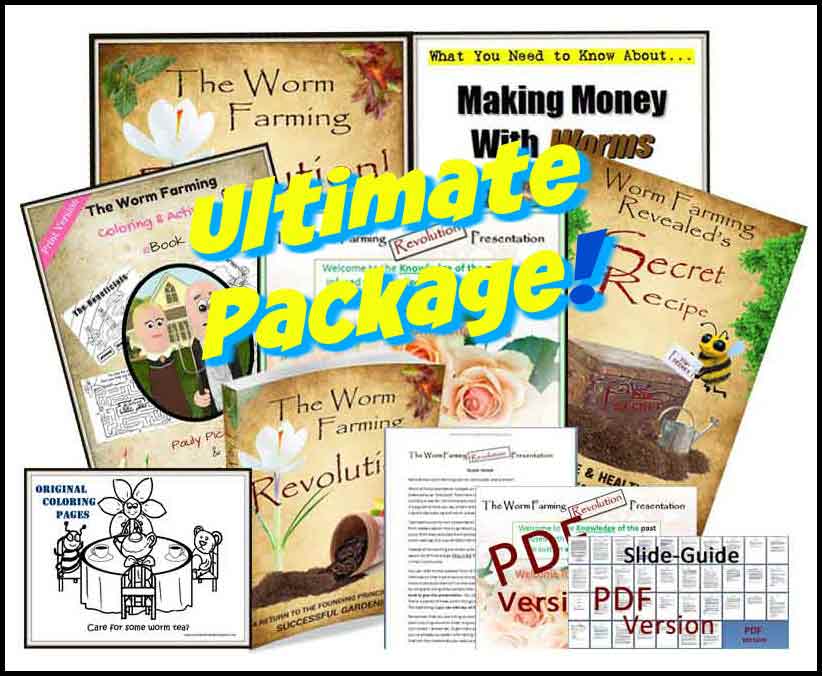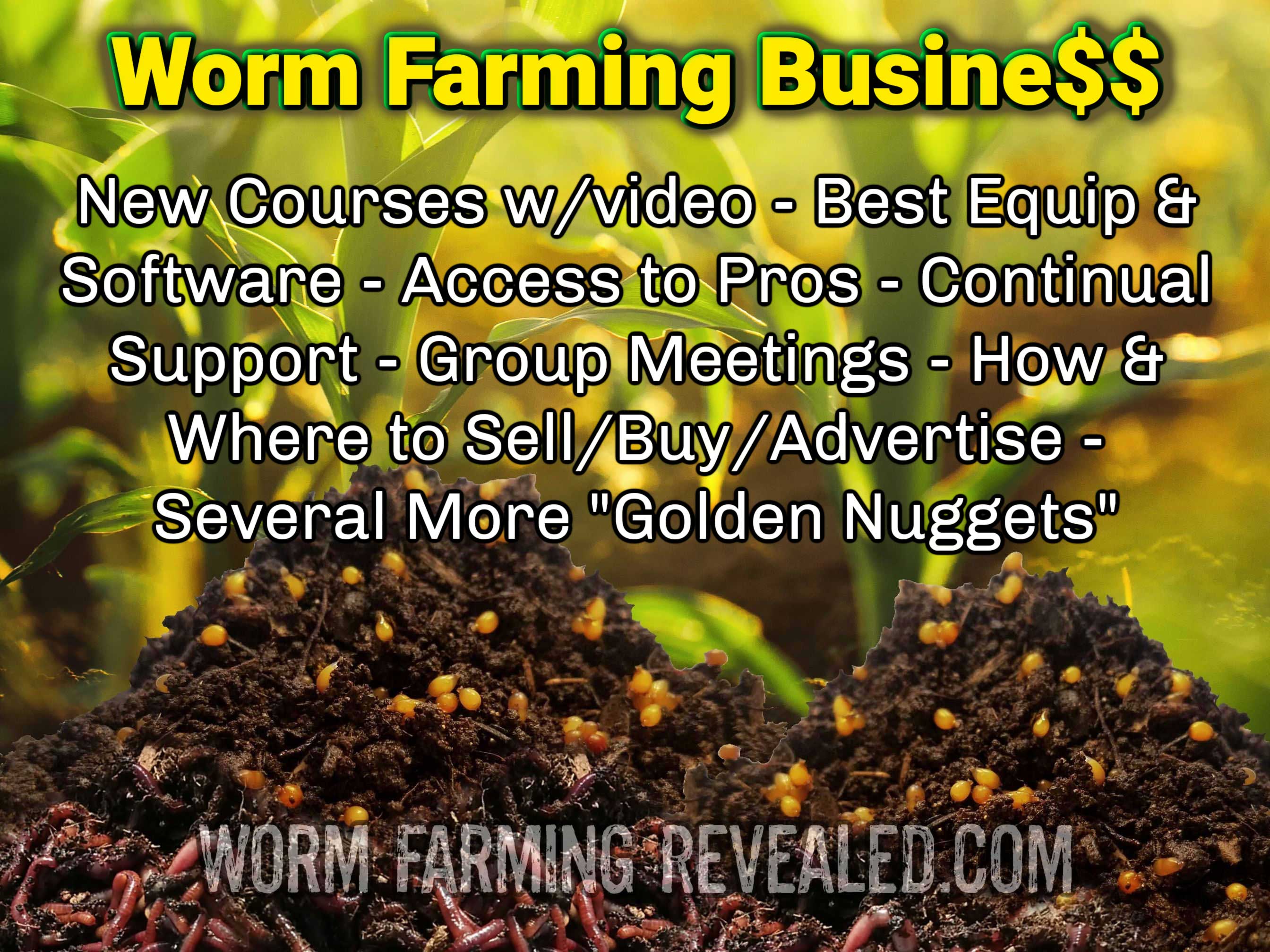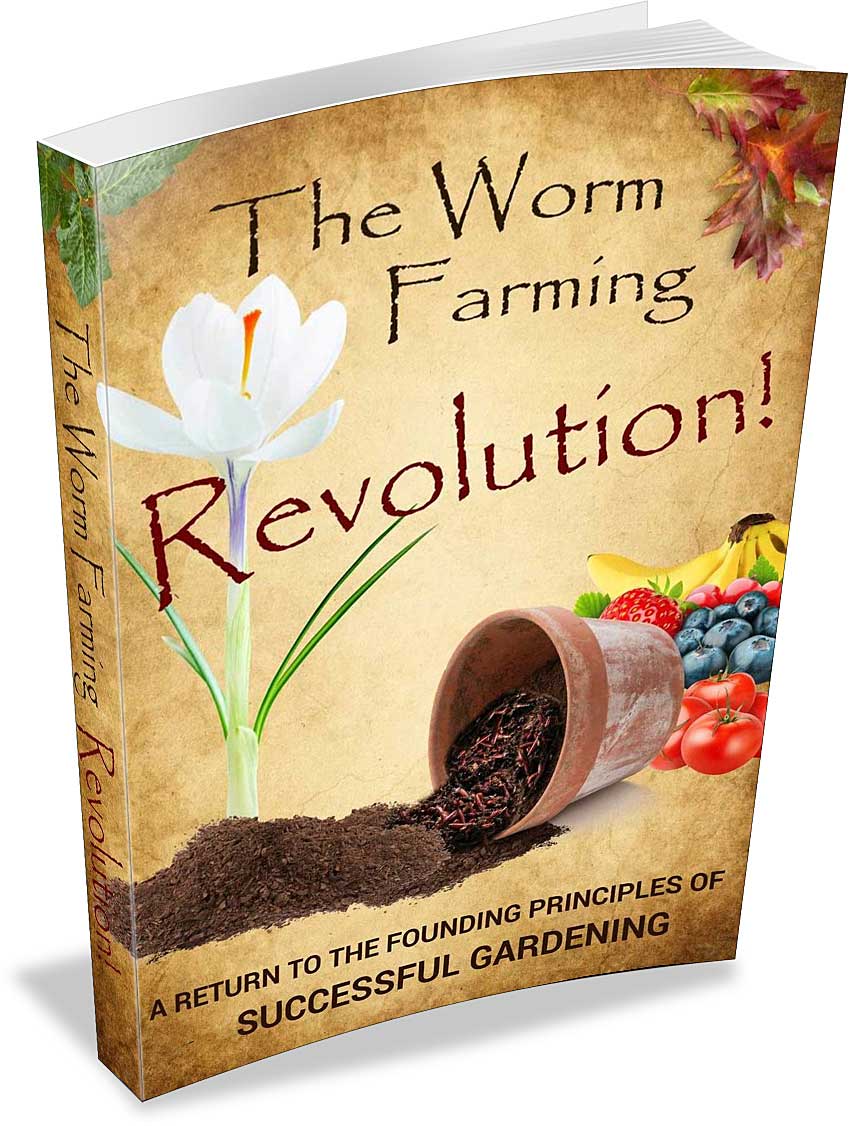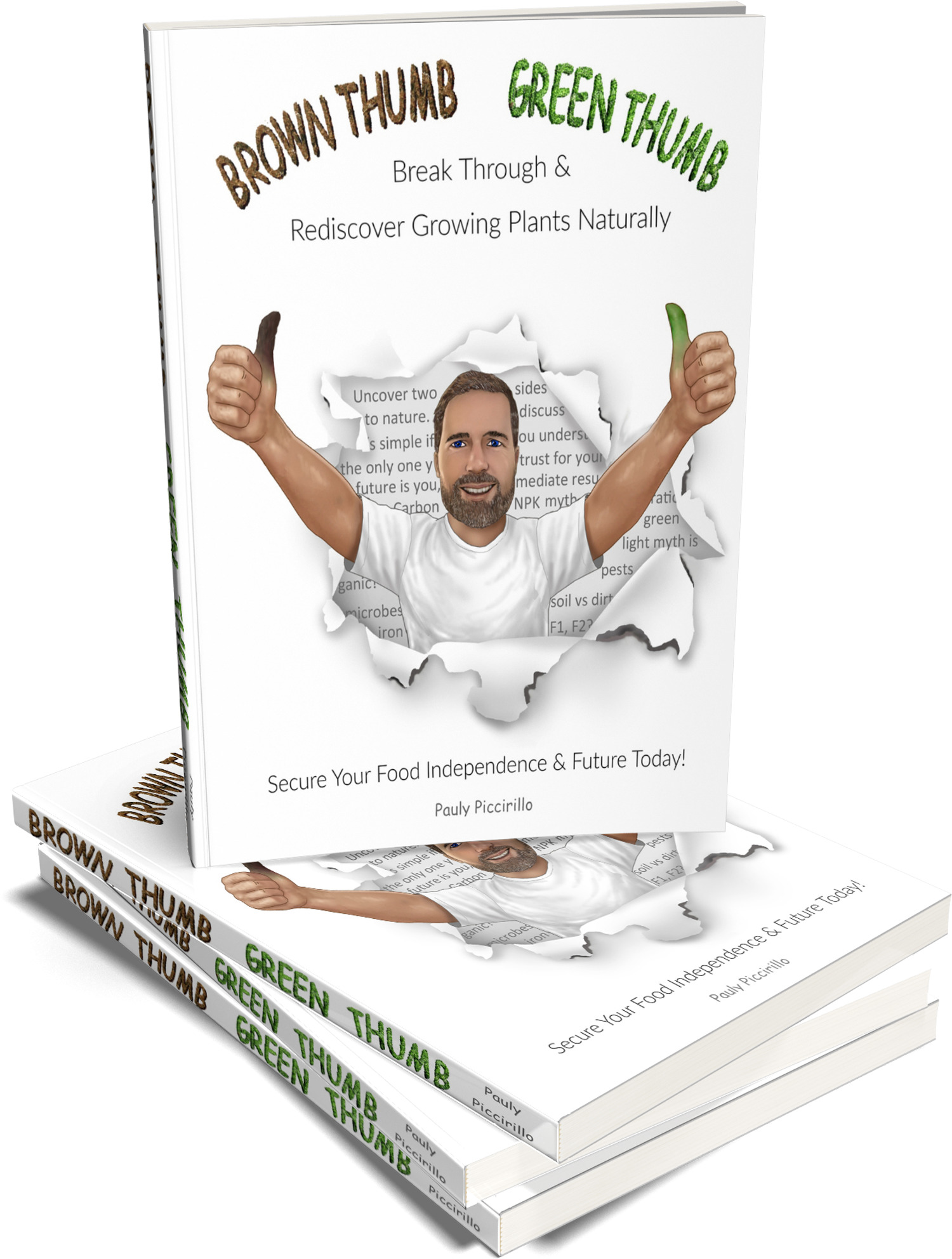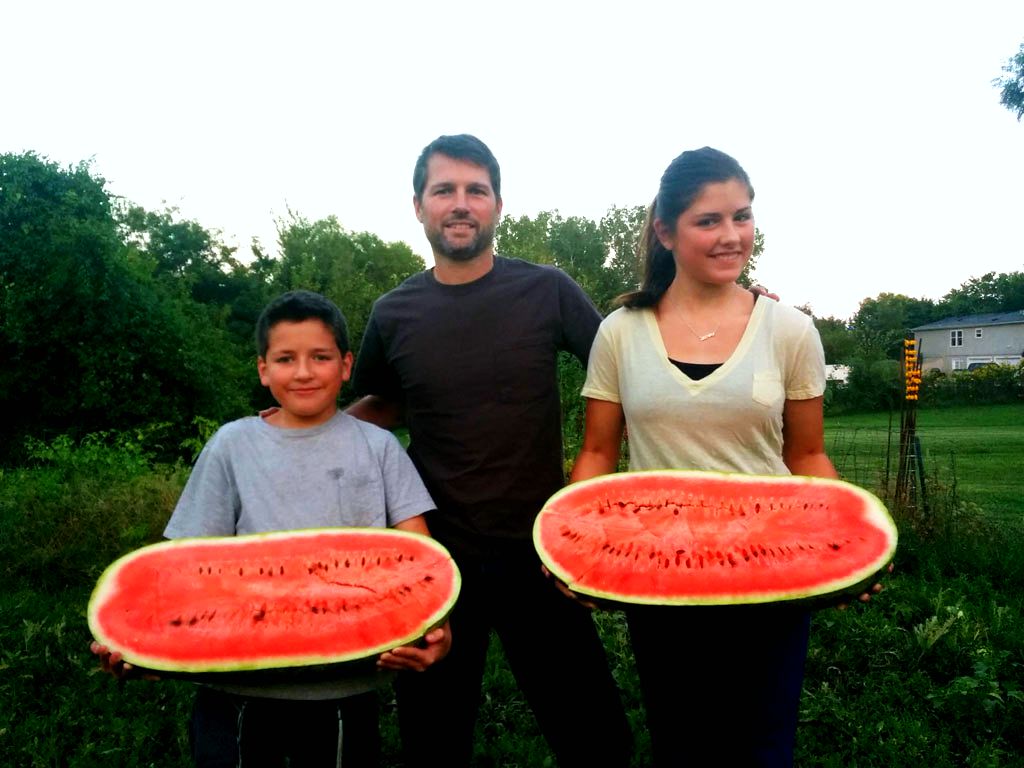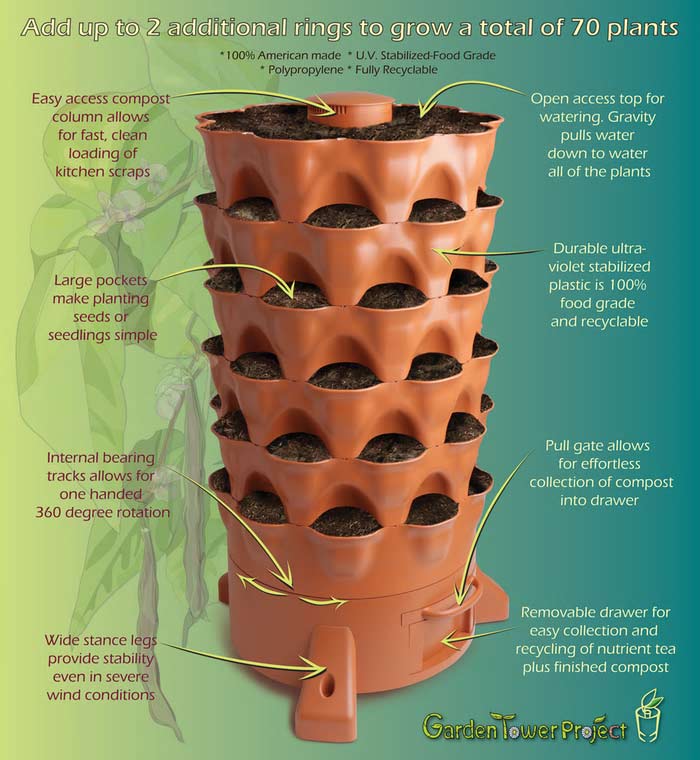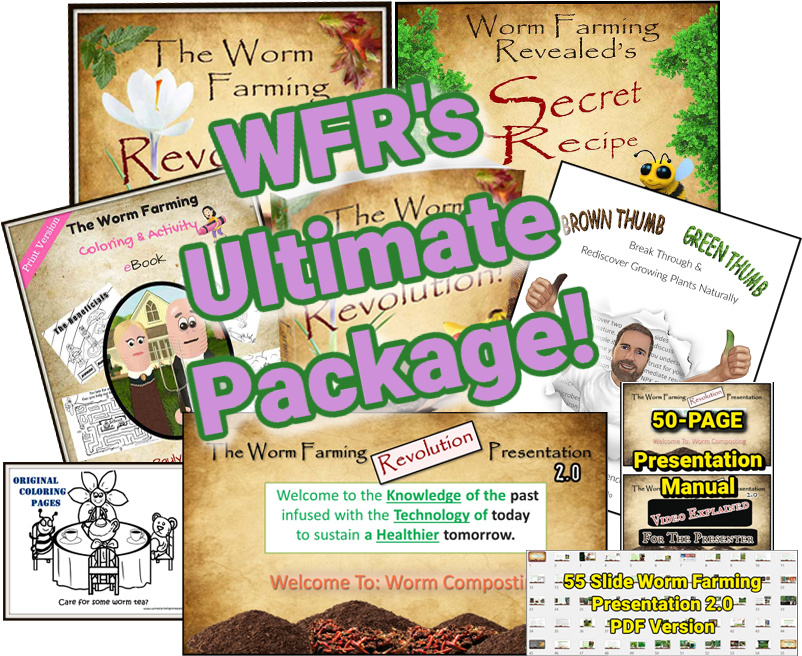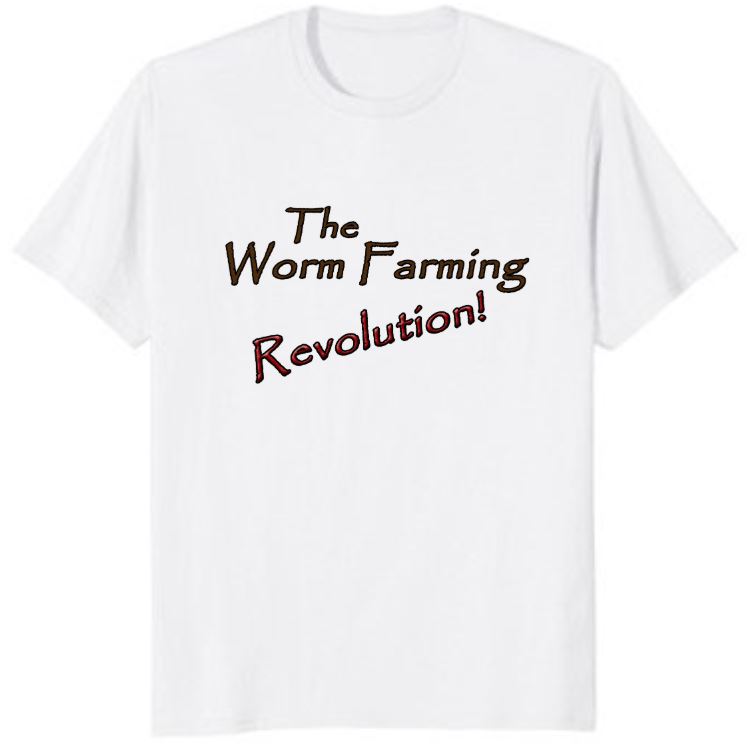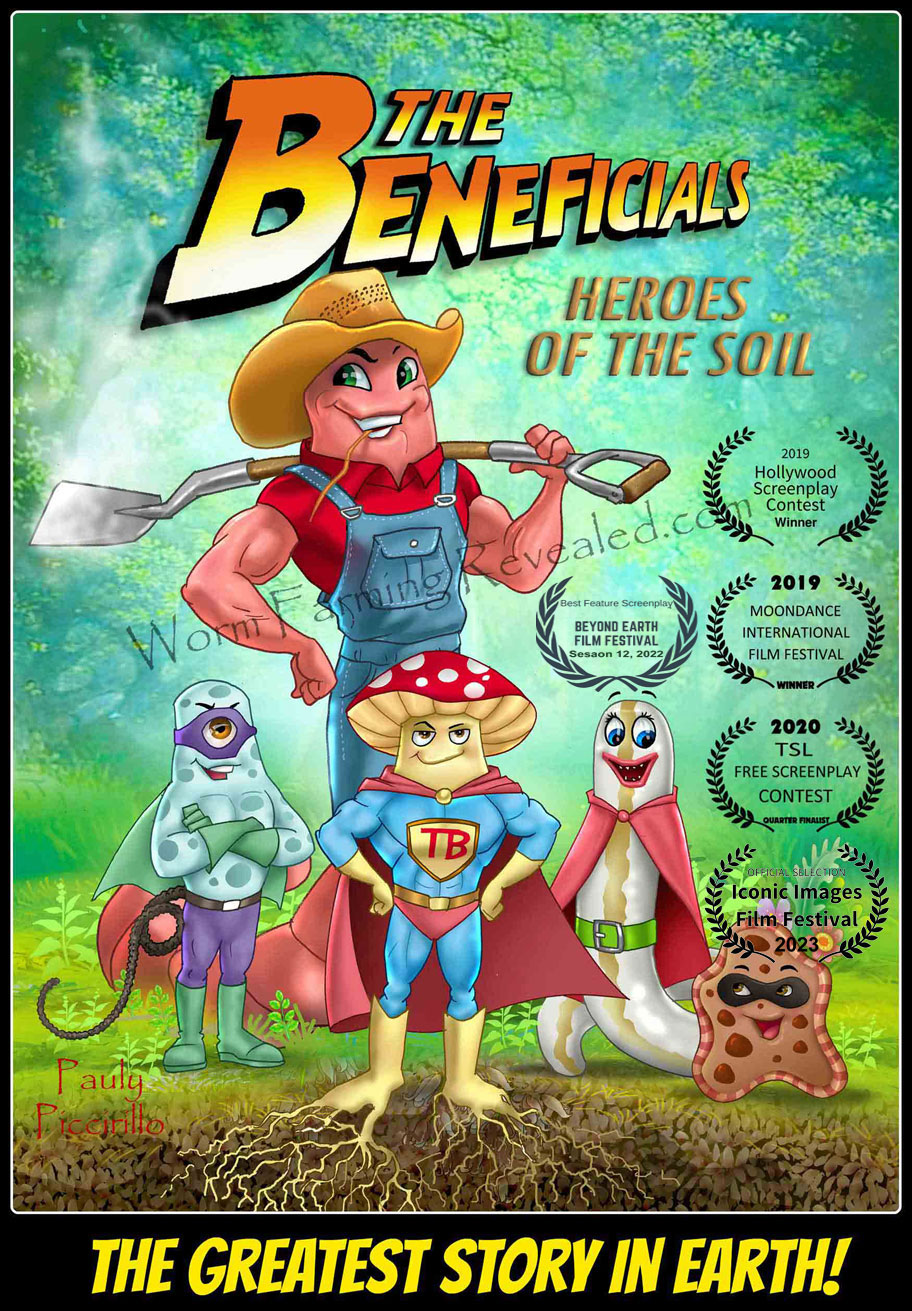Brown Thumb Green Thumb Chapter 3
Brown Thumb Green Thumb Chapter 3 is available as a test drive. Click the back button to see more of the book.
Brown Thumb Green Thumb
Chapter 3
How Soil Works
Plant & Soil Relationships
By now I think you have a good understanding of what a living soil is. I’ll assume at this point, when referring to living soil, I can drop the word “living” since dirt is lifeless, and soil is lively.
Through the explanation of the organisms and their functions in the soil, it’s almost second nature in understanding how soil works. This is most of the equation.
I’ll discuss how everything is assembled through the autotrophic and heterotrophic process of the soil food web in relation to how the plant grows and assimilates the nutrients
I don’t want to get into the weeds on this subject. However, I think it’s important to discuss the two (maybe three) types of trophic species.
· Autotroph – an organism (plants) able to
create its own food.
· Heterotroph – an organism that must obtain/find
its food from other sources. Most microbes, plus animals and humans, are
heterotrophic.
· Mixotroph – This is an organism that can make its food, as well as consume other organisms. Such organisms are phytoplankton which live on the surface of the ocean to absorb CO2. Plants, like the Venus Fly Trap, will trap and digest insects as well as photosynthesize.
I’ll not
discuss the mixotrophs as they’re not essential for growing the food and
medicine a gardener needs for sustainability. Interestingly though, much of the
Earth’s oxygen comes from these plant-like organisms growing in vast oceans,
along with other algae and diatoms. Diatoms will be an important discussion for
later, in regard to how I utilize them.
The Food Chain
Earlier I stated that bacteria are at the bottom of the food chain. I want to begin with lifeless dirt and progress into a thriving habitat for ALL LIFE.
Some land (even over farmed land) contains nothing but compacted clay, sand, silt, rocks, etc. I don’t want you to think these aren’t useful elements (if you’ve skip to this section already), they are. These are wonderful resources.
They just
need to be unlocked, because without this lifeless dirt, we can’t have life.
Holding a handful of minerals does nothing until we swallow them and allow the
microbes to break them down into a soluble form.
How to “Wake Up” Dirt
When it comes to the transportation of nutrients, there are some key players that do some extraordinary things.
These are
POWERHOUSE microbes, and there is no doubt they will team up and start laying
the building blocks of soil.
They are…
The Heroes of the Soil
- Bacteria
- Fungi
- Protozoa
- Nematodes
If introducing microbial activity into the dirt, the process in which to inoculate it is by means of a few different approaches.
1. Compost
2. Compost tea/extracts
3. Carbon litter
Compost can be made in many forms. My two favorites: 1) Indoor worm composting 2) Outside carbon compost piles with some added kitchen scraps. The kitchen scraps aren’t necessary, but better to compost than go to the landfill.
Of course, you won’t be spreading layers of worm castings over an entire garden or several acres of land, but getting it sprinkled in is greatly beneficial. Worm poop has become widely acknowledged among academia and practical gardeners as containing the four major microbes listed above.
If you do
consider adding beneficial fungi, worm compost is full of fungi.
Compost tea (Aerated Compost Tea) and tea extracts should
contain all the microbial organisms necessary to begin feeding on the minerals or
any organic matter you add to the dirt or any ground you’re wanting to boost.
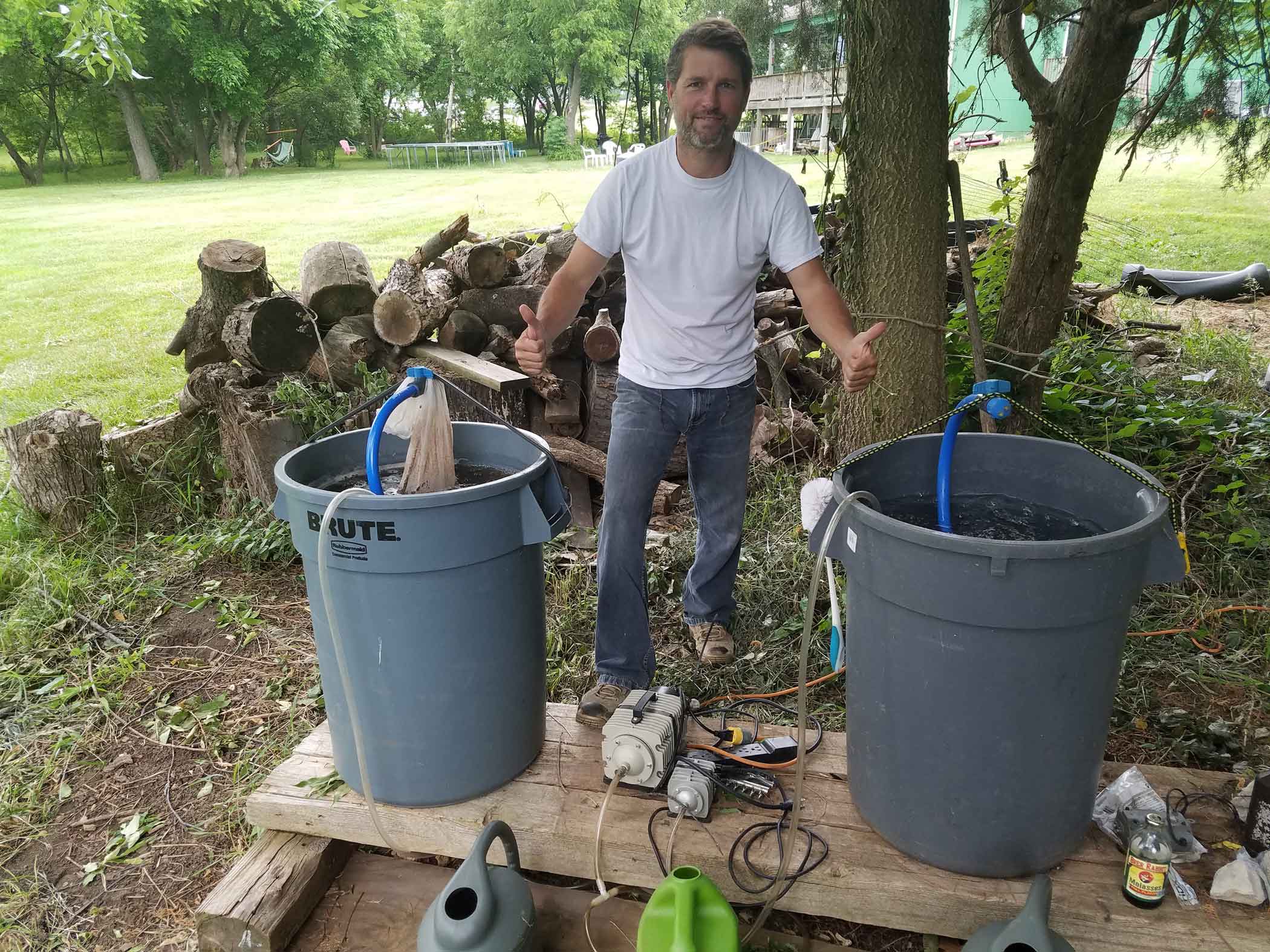 2020 compost tea setup
2020 compost tea setup
The aerated
tea is microbial farmed to breed the desired microbes you’re wanting to
introduce into the plot.
The microbes
will double (when brewing) in a matter of minutes (depending on what catalyst
is used) in favorable conditions within 24-36 hours.
This is extremely efficient and cost effective as it can cover huge areas. Size is no match. It has the ability to penetrate as deep as the ground will absorb it and the amount that can be produced is endless.
Tea extracts are not as potent. This is NOT an aerated process for the rapid multiplication of organisms. This process is made with finished (mature) compost soaked in water for a period of days or less, for the extraction of microbes.
This process is much less stable and risky, due to the lack of aeration.
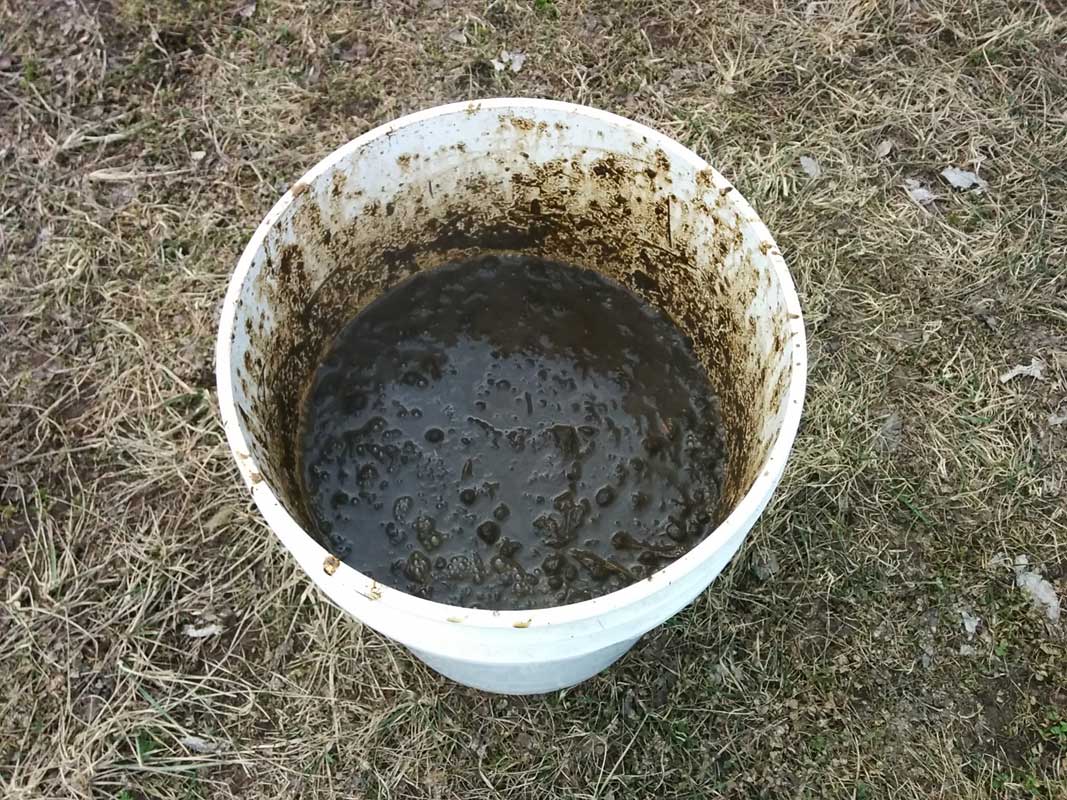 Compost Tea Extract
Compost Tea ExtractMost
of the time these are good extracts when done properly with mature compost.
Without the aeration process and if soaked for too long, it can wake up some
harmful pathogens. However, it’s still getting good nutrients into the desired
area.
Carbon litter or a cover mulch can consist of many different dead brown materials from wood chips, and leaves, to grasses, and straw or other shredded woody products, and so on.
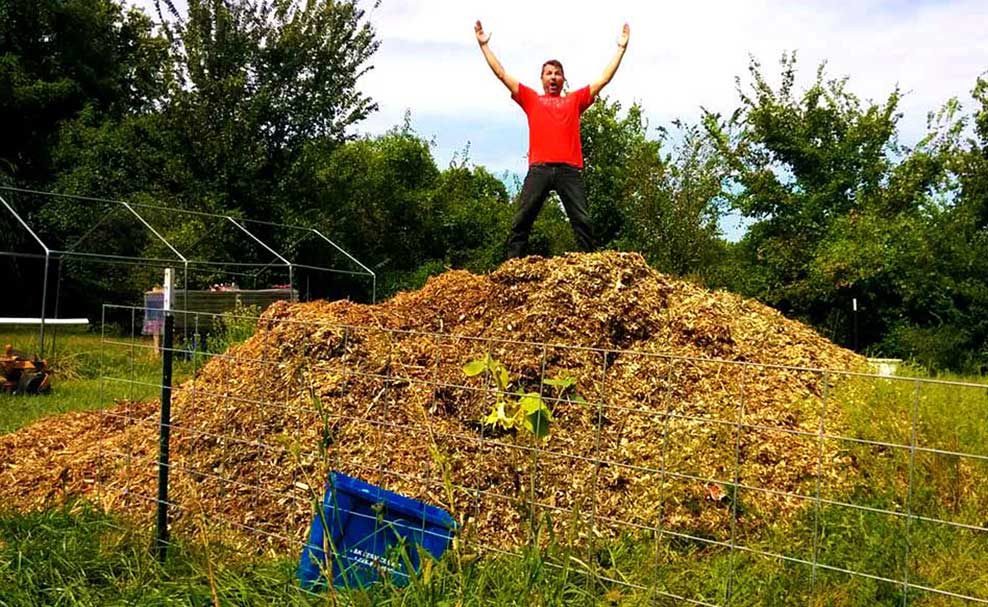 Free Truckloads of Woodchips
Free Truckloads of WoodchipsThe microbes consume the material, much like a mesophilic compost pile, and begin working their way downward into the ground. If dirt was completely void of any life, now the worms, arthropods, and larger animals begin to move in.
Seeds that may have been dormant, seeds from the
carbon litter, or seeds conveyed from animals, begin to germinate.
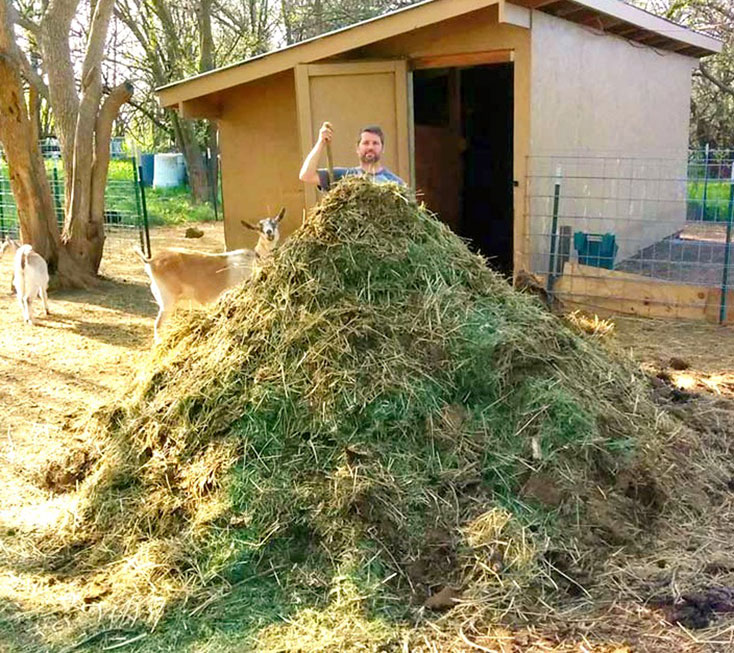 compost pile with goat manure and hay
compost pile with goat manure and hayThis creates the plant exudates the microbial community (and all other life) will need to thrive in this new “desert turned to oasis”. This proves once again, that without plants, there can be no life.
There are so many working components and each one isn’t more important than the others.
How Nature Creates Soil
After applying any of these methods for microbial inoculation, the process runs itself. In fact, if you really think about the big picture, nature already performs these three major functions of adding and recycling nutrients into the soil.
Picture grasslands or forests. The floor is dense with previous plant matter fallen from above (carbon litter). Microbes convert it into compost for plants to feed on (compost piles, but a smaller scale). Some plants immediately feed on it, while other plants wait for the soaking rains (tea extracts) to penetrate through several feet down. This could be a quick “compost drench” to a thorough soaking, depending on rain volume. Because the soil is so porous and aerated, fungi will also convey the nutrients over vast areas vertically and laterally.
Some people enjoy certain buzz words for this, such as, recycling, renewing, regenerative. But this is how nature works. The Earth is constantly renewing itself. So, I just prefer to call it what it is, A Living Soil.
Note:
If you’re wondering how to obtain these organisms, don’t be concerned. They are
there. If you build it, they will come. They may be dormant, but they will
begin feeding on the carbon litter and minerals.
If they’re not already in the ground (highly unlikely), then they’re in the air, in carbon litter, and in teas that you inoculate the ground with. During certain seasons, when the conditions are suitable, there will be higher counts of fungal and mold spores than that of pollen. So, they are definitely out there.
Some growers purchase beneficial bacteria, fungi, protozoa, and nematode inoculants. STOP! You can do this if you really feel it’s necessary, but it’s a waste of money in my opinion. If you’re wanting a certain type of fungal dominance, then I can see purchasing those types of products, only for quicker results. However, whatever you grow, the plant will communicate with the soil and tell it what types of microbes it needs.
It will take a little longer but might even be more beneficial as the root zone will adapt slowly as it needs to. Slow and steady wins the race. Too much of one organism throws off the balance. Later, I’ll discuss how you can obtain all the growth medium you need for your plants and at no cost.
Soil Logistics
“A community cannot function without logistics. Soil is no different.” ~Pauly Piccirillo
As long as the ground
remains moist, bacteria begin bonding to minerals and other organic matter in
the ground.
At the same time fungal spores and/or mycorrhizal rooting will take place. The fungi eat the bacteria and feed on dead plant matter as well. The material should be some form of carbon (as beneficial fungi like to feed on) such as, dead fall leaves, wood chips, dead brown grass, cardboard, etc. A good thick layer of brown material of about 6 inches or so will be good.
However, remember it’s not just about these two microbes. We need to grow the right kinds of microbes for our plants, and only the plant can communicate to the soil what types of microbes it wants to feed on.
How does this happen? By simply sowing a seed or transplanting. They’ll grow and send out the chemical signals in the form of exudates. What is an exudate?
An exudate is when a plant exudes, leaks, or secrets carbohydrates into the soil in the form of sugar, proteins, and carbohydrates. This carbohydrate is Carbon + Hydrogen + Oxygen. This is a ratio of 1:2:1. There contain more hydrogen than the other two elements in the sugar. That’s a lot of stored energy.
The ability to absorb carbon dioxide from the air through photosynthesis and convert it to carbohydrates is amazing, but I digress. More on that later.
The type of sugar a plant exudes will be dependent upon the species growing, as stated earlier. This is why it’s very necessary to get your plants into the ground to begin this process.
Some plants have more of an appetite for bacteria and less for fungi, other plants are more fungal dependent than bacterially dependent.
Trees, shrubs, and grasses are fungal dominant, but still benefit from bacteria. Many garden crops and weeds are bacterial feeders, but still benefit from fungi. Some plants are equally dependent on both.
A forest is heavily fungal dominant due to the high amounts of dead carbon matter, such as woody material and dead brown leaf litter which makes sense, due to the recycling process. However, if trees are planted or seeds left to grow on their own, a fungal dominant soil is created.
Through exudation the plant is now beginning to communicate with the soil. The plant and soil begin feeding each other.
This is an amazing process to understand because it helps us to better control and give the plants the environment they need.
autonomously the beneficial protozoa and nematodes appear. The protozoa feed on bacteria and fungi. Nematodes feed on bacteria, fungi, protozoa, and even other nematodes.
Protozoa and nematodes excrete their waste, feeding more bacteria which split into increased populations. While plants are feeding the soil community its sugars, proteins, and carbohydrates, the overpopulation of microbes is balanced by plant-root uptake in the form of nitrogen among many other nutrients.
Worms and arthropods contribute to the management of overpopulations of nematodes, protozoa, bacteria, and fungi to keep the balance of power in check.
When arthropods and worms get out of control, spiders, birds, moles, and other larger prey are attracted. This in return, attracts larger predators. The larger animals, like rodents, snakes, all herbivores, and all carnivores contribute. They contribute through waste excretions or in death, thus moving on up the food chain to humans.
At this
point, all life is eating, pooping, and repopulating the root zone community
and contributing quite nicely to the balance of nature.
Farmers using chemical fertilizers, grow plants using dirt.
Natural farmers grow plants working with soil.
For most agricultural farmers, chemicals, such as Nitrogen, Phosphorus, Potassium, Magnesium, Calcium, Iron, etc. need to be in a soluble form or the plant will not uptake vital nutrients. It’s completely dependent on water evaporation via transpiration for the uptake, other than the CO2, Oxygen, and Hydrogen in the air.
Hopefully, the right chemical compounds in the ground are distributed evenly and properly, and the right amount of rain falls at the right time.
Where do synthetic chemical fertilizers come from? Chemicals come from many different processes which include a large amount of petroleum sources. Some fertilizers are even byproducts of other chemicals. Other chemical byproducts are added to our foods rather than thrown away. This is clever because companies can get rid of it slowly (and profit), rather than create a toxic dump environment.
For organic or natural growers, minerals/nutrients don’t necessarily need to be in a soluble or dissolved form, microbes break it down into a colloidal form.
A colloid is a particle ranging from between 1 and 1000 nanometers in diameter, so small it’s able to be suspended in a solution. Microbes can consume colloids whole and break them down into useable nutrients. This is the job of bacteria and fungi.
Why do some get so crazy for fertilizer or amendments?
When the islands of Hawaii were formed, volcanoes spewed out many forms of minerals and cooled into a giant piece of rock, which is still happening to this day. In order to form plant life, it only needed a few natural things to happen.
1. Microbes (bacteria and fungus spores through the wind or animals)
2. Transportation of seeds via animals or their excrement
3. Rain
4. Oxygen
5. Carbon Dioxide (CO2)
6. Sunlight (photosynthesis)
7. Seed germination
8. Plant growth, thus feeds the soil
9. Plants drop their seed, germinate, and populate the land.
That’s it. Where are the chemicals? Where are the humans? Nature doesn’t need us in order to thrive. It doesn’t need us to sow, fertilize, maintain, and harvest. All we need to do is benefit and be good stewards.
A forest is a perfect example of how everything grows and maintains itself in seemingly perfect harmony. Nevertheless, the forests, grasslands, meadows, mountains, shores, swamps, and many other bodies of land are NOT without their imperfections.
Nature is a very, very brutal reality. Different species of animals don’t exactly live in harmony with each other. it’s a dog-eat-dog world. We don’t need animated animal movies, or many fascinating African wildlife shows to tell us that. We learned this in school.
At 30,000 ft. everything looks beautiful and organized, but the reality is that there are predators and diseases. The same goes for plants.
A simple walk through the forest with a careful eye will show you diseased, and even deficient plants. That can be due to many variables, but overall, everything is working very well. Nature will take care of itself. Whether predator or prey, life is only trying to thrive on both sides. What matters is a proportionate balance.
Our gardens are the same. The only difference is, we have much more control as to what happens. When we see an imbalance, we either correct it, or know that it will correct itself.
I’ve walked through many beautiful gardens and seen many issues that need addressed. Is the gardener doing anything wrong? Not necessarily. It depends on what their goal is. Do they want beautiful ornamentals or harvest lots of produce? If they are harvesting everything they want to harvest and it’s of great quality, the gardener may not have to do anything at all. Bravo! This is a great gardener.
I’ve harvested more zucchini than I care to eat from just one plant that contained squash bugs. I can’t keep up with the harvesting/eating just one of my cucumber plants even though there are cucumber beetles. It’s still a healthy plant.
Some seasons I’ve not had squash bugs, others I have. This could be due to my neglect (I tend to be a lazy gardener at times), nature running its cycles, or other elemental variables. I’ll discuss this at the end of the book in the Gardening Advice chapter. However, some “pests” are No problem! We live together in harmony even if I “squashed a few” (is this why they’re called squash bugs?)
~End of preview~
Back to Brown Thumb Green Thumb
